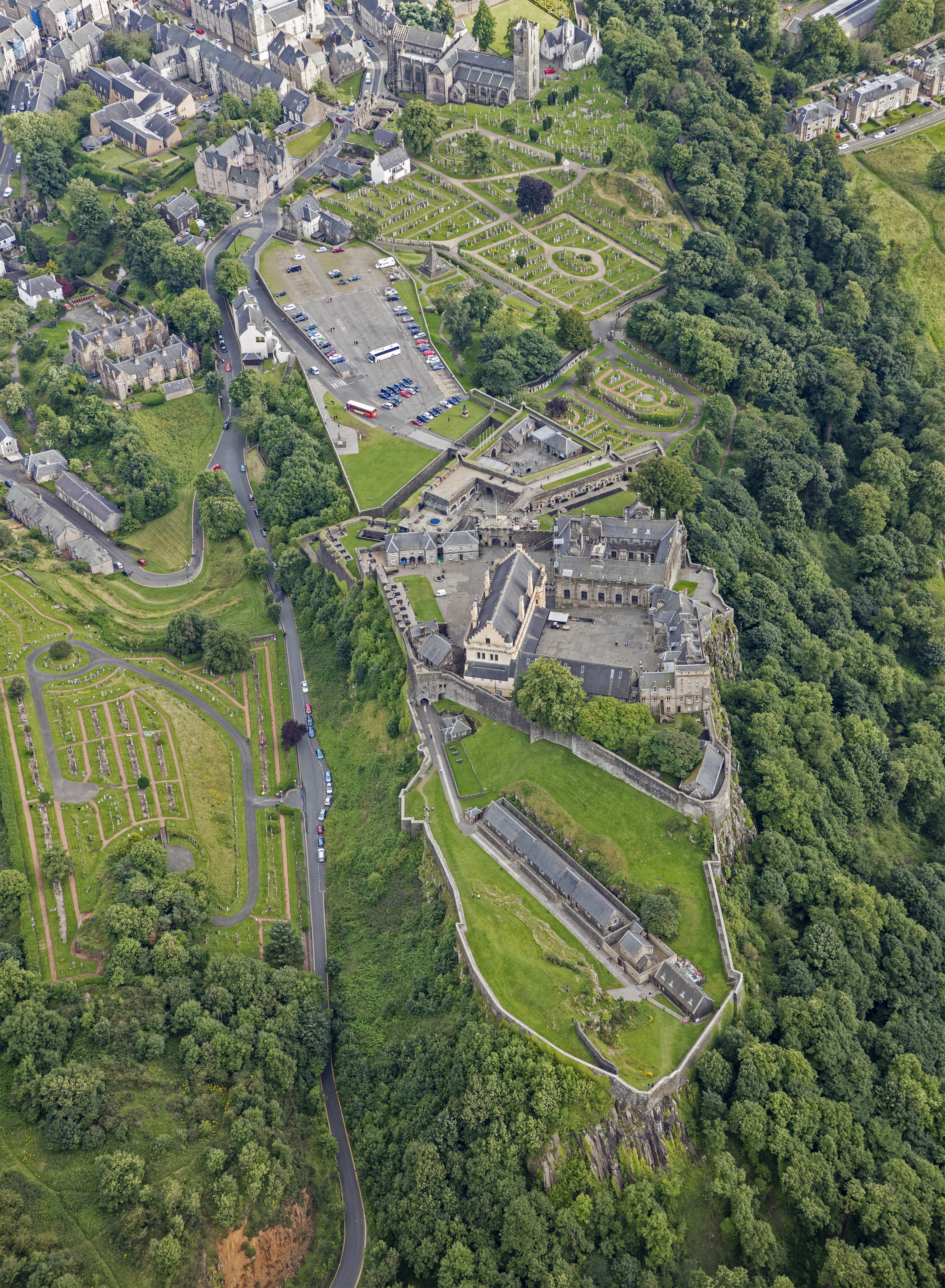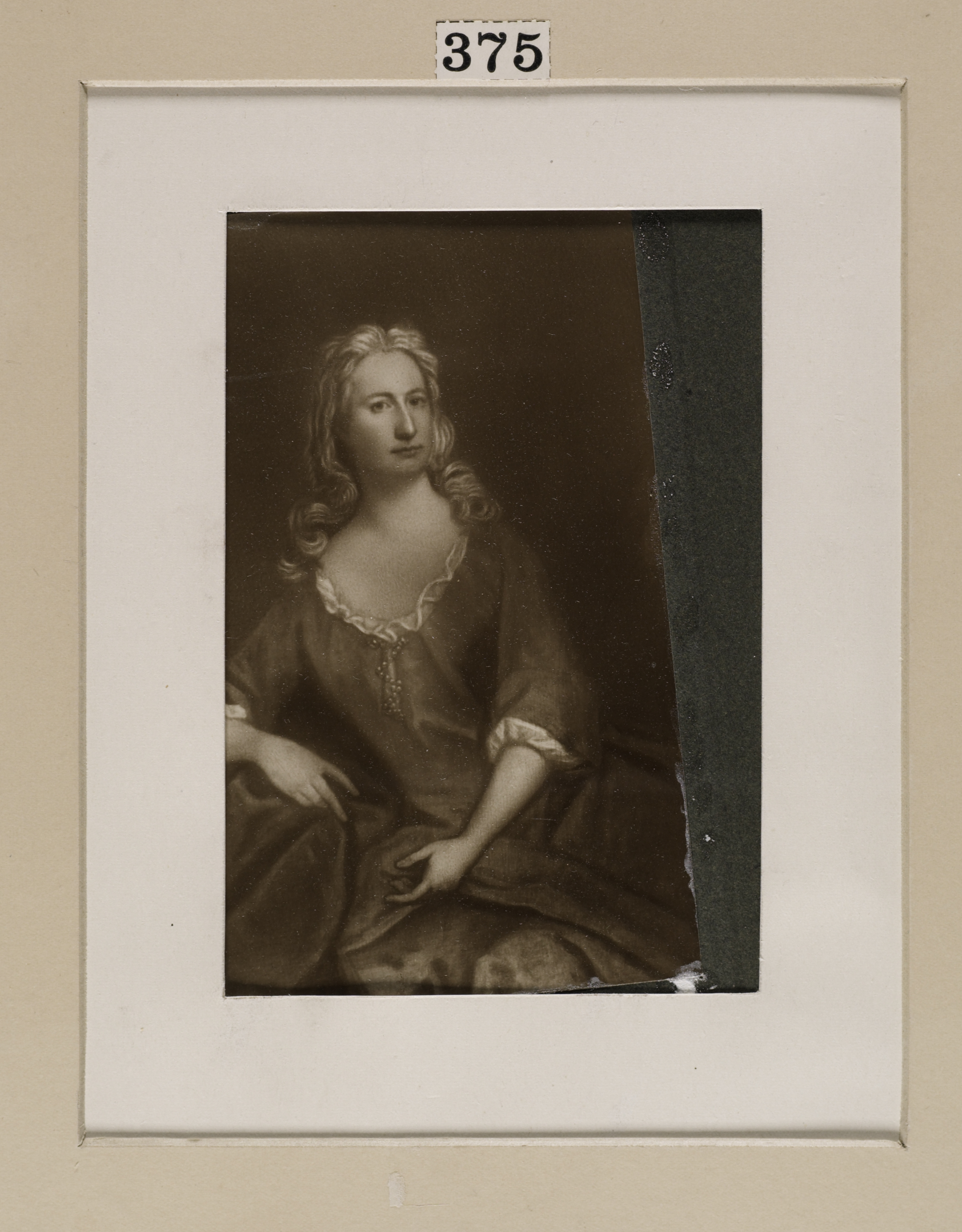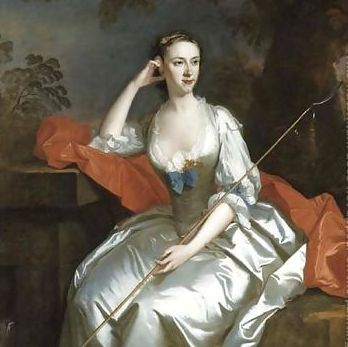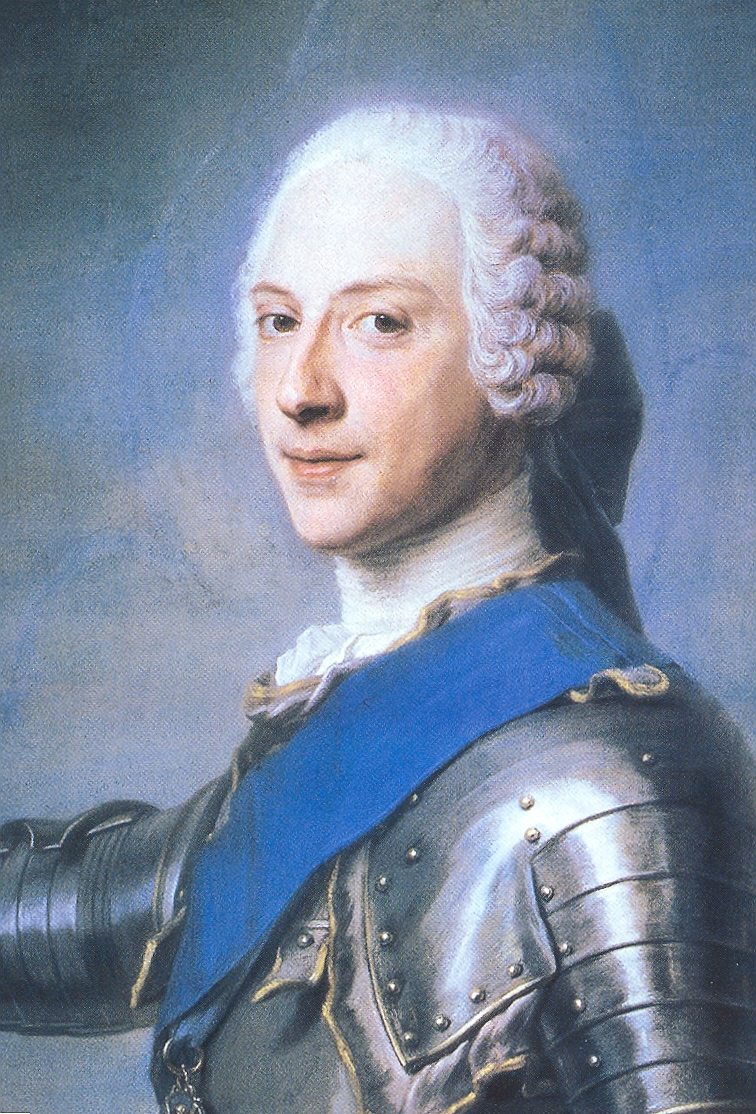|
Siege Of Stirling Castle (1746)
The siege of Stirling Castle took place from 8 January to 1 February 1746, during the 1745 Rising, when a Jacobite force besieged Stirling Castle, held by a government garrison under William Blakeney. Despite defeating a relief force under Henry Hawley at Falkirk Muir on 17 January, the siege made little progress; when Cumberland's army began advancing north from Edinburgh, it was abandoned and on 1 February the Jacobites withdrew to Inverness. Background One of the strongest fortifications in Scotland, Stirling Castle controlled access between the Highlands and the Lowlands. In September 1745, the Jacobite army passed nearby en route to Edinburgh, but had neither the time nor the equipment needed to take it. Leaving Viscount Strathallan in Perth to recruit additional forces, the main army crossed into England on 8 November and reached Derby on 5 December before turning back, entering Glasgow on 26 December. While its only tangible result was the capture of Carlisle, advanci ... [...More Info...] [...Related Items...] OR: [Wikipedia] [Google] [Baidu] |
Jacobite Rising Of 1745
The Jacobite rising of 1745, also known as the Forty-five Rebellion or simply the '45 ( gd, Bliadhna Theàrlaich, , ), was an attempt by Charles Edward Stuart to regain the British throne for his father, James Francis Edward Stuart. It took place during the War of the Austrian Succession, when the bulk of the British Army was fighting in mainland Europe, and proved to be the last in a series of revolts that began in 1689, with major outbreaks in 1708, 1715 and 1719. Charles launched the rebellion on 19 August 1745 at Glenfinnan in the Scottish Highlands, capturing Edinburgh and winning the Battle of Prestonpans in September. At a council in October, the Scots agreed to invade England after Charles assured them of substantial support from English Jacobites and a simultaneous French landing in Southern England. On that basis, the Jacobite army entered England in early November, reaching Derby on 4 December, where they decided to turn back. Similar discussions had taken pl ... [...More Info...] [...Related Items...] OR: [Wikipedia] [Google] [Baidu] |
William Drummond, 4th Viscount Strathallan
William Drummond, 4th Viscount Strathallan (1690 – 16 April 1746) was a Scottish peer and Jacobite, who died at the Battle of Culloden. Pardoned for his part in the 1715 Rising, he raised a troop of cavalry for Prince Charles in 1745 and appointed Jacobite Governor of Perth. While the main army invaded England, he remained in Scotland to recruit additional troops and was replaced by Lord John Drummond in late November 1745. He died at Culloden in April 1746. His eldest son James (1722-1765) also took part in the Rising and escaped to France. He was attainted in July 1746, losing titles and lands; his estates were repurchased by the family when he died in 1765 and the titles restored in 1824. Life William Drummond was the eldest surviving son of Sir John Drummond of Machany (ca 1670-1707) and Margaret, daughter of Sir William Stewart of Innernytie. His date of birth is given as 1690 but there is some doubt on this point, as his 'younger' brother Andrew was born in 16 ... [...More Info...] [...Related Items...] OR: [Wikipedia] [Google] [Baidu] |
18th Century French Cannon By Andrew Schmidt
18 (eighteen) is the natural number following 17 and preceding 19. In mathematics * Eighteen is a composite number, its divisors being 1, 2, 3, 6 and 9. Three of these divisors (3, 6 and 9) add up to 18, hence 18 is a semiperfect number. Eighteen is the first inverted square-prime of the form ''p''·''q''2. * In base ten, it is a Harshad number. * It is an abundant number, as the sum of its proper divisors is greater than itself (1+2+3+6+9 = 21). It is known to be a solitary number, despite not being coprime to this sum. * It is the number of one-sided pentominoes. * It is the only number where the sum of its written digits in base 10 (1+8 = 9) is equal to half of itself (18/2 = 9). * It is a Fine number. In science Chemistry * Eighteen is the atomic number of argon. * Group 18 of the periodic table is called the noble gases. * The 18-electron rule is a rule of thumb in transition metal chemistry for characterising and predicting the stability of metal complexes. ... [...More Info...] [...Related Items...] OR: [Wikipedia] [Google] [Baidu] |
Chevalier De Johnstone
James Johnstone (1719 – c. 1791), also known as Chevalier de Johnstone or Johnstone de Moffatt, was the son of an Edinburgh merchant. He escaped to France after participating in the 1745 Rising; in 1750, he was commissioned in the colonial army and served in French North America. His military career was undistinguished and he remained a Lieutenant after ten years of service. Following the loss of Quebec in 1760, he returned to France and left the army. There are few details on his later life and he is thought to have died sometime after 1791. He is best remembered for his ''Memoirs of the rebellion in 1745 and 1746'', first published in 1820. Life James Johnstone was born 25 July 1719, only son of Jeremy Boone Johnstone, an Edinburgh merchant; his mother was a distant relative of Lady Jane (or Jean) Douglas (ca 1698-1753), later the centre of a famous inheritance case known as the Douglas Cause. He had two sisters; the elder, Cecilia (ca 1715-1746), married John Rollo (17 ... [...More Info...] [...Related Items...] OR: [Wikipedia] [Google] [Baidu] |
Siege Of Carlisle (November 1745)
The First Siege of Carlisle was an important event of the 1745–1746 Jacobite rising. Jacobite forces loyal to Prince Charles Edward Stuart captured the city of Carlisle and Carlisle Castle on 14–15 November 1745. Background Jacobite leader Charles Edward Stuart had received intelligence that the British commander General George Wade was advancing with British forces from Newcastle to relieve Carlisle and that he had already arrived in Hexham. Charles Stuart had decided to meet and attack him on hilly grounds between Newcastle and Carlisle. Leaving a sufficient force to blockade Carlisle he departed with the remainder of his army on the morning of 11 November 1745. Stuart reached Brampton at about ten o'clock and despatched a party of horse led by a Colonel in the direction of Hexham to reconnoitre and order his men to take up quarters for the night. The Colonel returned with news that General George Wade's march to Hexham had been false. Charles waited at Brampton for ... [...More Info...] [...Related Items...] OR: [Wikipedia] [Google] [Baidu] |
Edinburgh Castle
Edinburgh Castle is a historic castle in Edinburgh, Edinburgh, Scotland. It stands on Castle Rock (Edinburgh), Castle Rock, which has been occupied by humans since at least the Iron Age, although the nature of the early settlement is unclear. There has been a royal castle on the rock since at least the reign of David I of Scotland, David I in the 12th century, and the site continued to be a royal residence until 1633. From the 15th century, the castle's residential role declined, and by the 17th century it was principally used as military barracks with a large garrison. Its importance as a part of Scotland's national heritage was recognised increasingly from the early 19th century onwards, and various restoration programmes have been carried out over the past century and a half. As one of the most important strongholds in the Kingdom of Scotland, Edinburgh Castle was involved in many historical conflicts from the Wars of Scottish Independence in the 14th century to the Jacobite ... [...More Info...] [...Related Items...] OR: [Wikipedia] [Google] [Baidu] |
Henry Pelham
Henry Pelham (25 September 1694 – 6 March 1754) was a British Whig statesman who served as 3rd Prime Minister of Great Britain from 1743 until his death in 1754. He was the younger brother of Thomas Pelham-Holles, 1st Duke of Newcastle, who served in Pelham's government and succeeded him as prime minister. Pelham is generally considered to have been Britain's third prime minister, after Robert Walpole and the Earl of Wilmington. Pelham's premiership was relatively uneventful in terms of domestic affairs, although it was during his premiership that Great Britain experienced the tumult of the 1745 Jacobite uprising. In foreign affairs, Britain fought in several wars. On Pelham's death, his brother Newcastle took full control of the British government. Early life Pelham, Newcastle's younger brother, was a younger son of Thomas Pelham, 1st Baron Pelham, and his wife, the former Grace Pelham, Baroness Pelham of Laughton, the daughter of Gilbert Holles, 3rd Earl of Clare, and ... [...More Info...] [...Related Items...] OR: [Wikipedia] [Google] [Baidu] |
Siege Of Carlisle (December 1745)
The siege of Carlisle (December 1745) took place from 21 to 30 December during the Jacobite rising of 1745, when a Jacobite garrison surrendered to government forces led by the Duke of Cumberland. The town had been captured by the Jacobite army that invaded England in November 1745 and reached as far south as Derby, before turning back on 6 December. They re-entered Carlisle on 19 December; leaving a garrison of 400 men, the main army continued its retreat into Scotland the next day. Advance elements of the government army reached Carlisle on 21 December, but siege operations were delayed until their heavy artillery arrived six days later. They commenced firing on 28 December, and the Jacobites surrendered on 30th; 384 prisoners were taken, some of whom were later executed and many others sentenced to transportation to the West Indies. Background The Jacobites crossed into England on 8 November and reached Carlisle on 10th. Previously an important border fortress, its def ... [...More Info...] [...Related Items...] OR: [Wikipedia] [Google] [Baidu] |
Henry Benedict Stuart
Henry Benedict Thomas Edward Maria Clement Francis Xavier Stuart, Cardinal Duke of York (6 March 1725 – 13 July 1807) was a Roman Catholic cardinal, as well as the fourth and final Jacobite heir to publicly claim the thrones of Great Britain and Ireland. Unlike his father, James Francis Edward Stuart, and brother, Charles Edward Stuart, Henry made no effort to seize the thrones. After Charles's death in January 1788 the Papacy did not recognise Henry as the lawful ruler of Great Britain and Ireland, but referred to him as the Cardinal Duke of York. He spent his life in the Papal States and had a long career in the clergy of the Roman Catholic Church, rising to become the Dean of the College of Cardinals and Cardinal-Bishop of Ostia and Velletri. At the time of his death he was (and still is) one of the longest-serving cardinals in the Church's history. In his youth, Henry's father made him Duke of York (in the Jacobite Peerage), and it was by this title that he was b ... [...More Info...] [...Related Items...] OR: [Wikipedia] [Google] [Baidu] |
Battle Of Inverurie (1745)
The Battle of Inverurie was fought on 23 December 1745 at Inverurie, Aberdeenshire, Scotland, during the Jacobite rising of 1745. Background After the Jacobite capture of Edinburgh in autumn 1745, Lord Lewis Gordon had been designated as the Jacobite Lord Lieutenant of Aberdeenshire and was given responsibility for raising men in north-eastern Scotland. With a mix of volunteers and men "pressed" into service, he mustered a relatively-large regiment including three battalions: the "Aberdeen" battalion, mainly volunteers from Aberdeen itself led by James Moir of Stonywood; the "Strathbogie" battalion, unwilling feudal levies under John Gordon of Avochie; and the "Mar" battalion, mostly Highlanders raised by Francis Farquharson of Monaltrie in Braemar and upper Deeside.Seton, Sir Bruce Gordon (1928) ''The Prisoners of the '45'', vol. I, Constable, p.311Reid, Stuart (2012) ''The Scottish Jacobite Army 1745-1746'', Bloomsbury, p.18 Gordon also set up a parallel civil administrati ... [...More Info...] [...Related Items...] OR: [Wikipedia] [Google] [Baidu] |
John Drummond, 4th Duke Of Perth
John Drummond (1714–1747), titular 7th Earl and 4th Duke of Perth, often referred to by his courtesy title Lord John Drummond, was a Franco-Scottish nobleman, soldier and Jacobite. Drummond served as an officer in the French Army, but is perhaps best known for his participation in the Jacobite rising of 1745, during which he was one of the senior Jacobite staff officers in addition to leading the Jacobite Royal Scots, a regiment raised by him in France. Early life John Drummond was born in 1714 in France; he was the second son of James Drummond, 5th titular Earl and 2nd Duke of Perth, and Jane, daughter of George Gordon, 1st Duke of Gordon. His family were Catholics and committed Stuart loyalists: his grandfather the 4th Earl, the former Lord Chancellor of Scotland, had accompanied James II into exile in France before being created Duke of Perth in the Jacobite Peerage by James's son James Edward Stuart. John Drummond's father did not succeed to the earldom, having be ... [...More Info...] [...Related Items...] OR: [Wikipedia] [Google] [Baidu] |
Carlisle
Carlisle ( , ; from xcb, Caer Luel) is a city that lies within the Northern English county of Cumbria, south of the Scottish border at the confluence of the rivers Eden, Caldew and Petteril. It is the administrative centre of the City of Carlisle district which, (along with Cumbria County Council) will be replaced by Cumberland Council in April 2023. The city became an established settlement during the Roman Empire to serve forts on Hadrian's Wall. During the Middle Ages, the city was an important military stronghold due to its proximity to the Kingdom of Scotland. Carlisle Castle, still relatively intact, was built in 1092 by William Rufus, served as a prison for Mary, Queen of Scots in 1568 and now houses the Duke of Lancaster's Regiment and the Border Regiment Museum. In the early 12th century, Henry I allowed a priory to be built. The priory gained cathedral status with a diocese in 1133, the city status rules at the time meant the settlement became a city. F ... [...More Info...] [...Related Items...] OR: [Wikipedia] [Google] [Baidu] |







